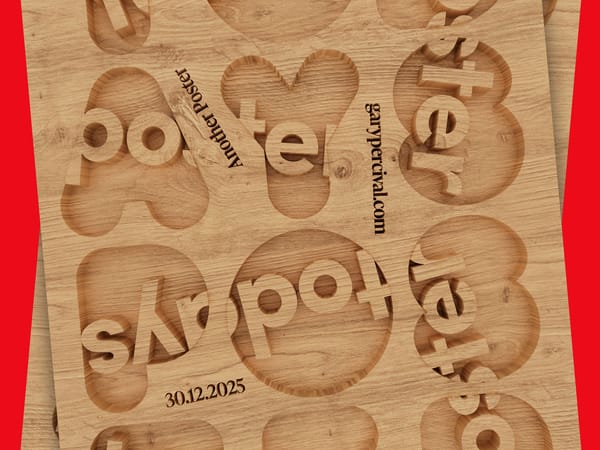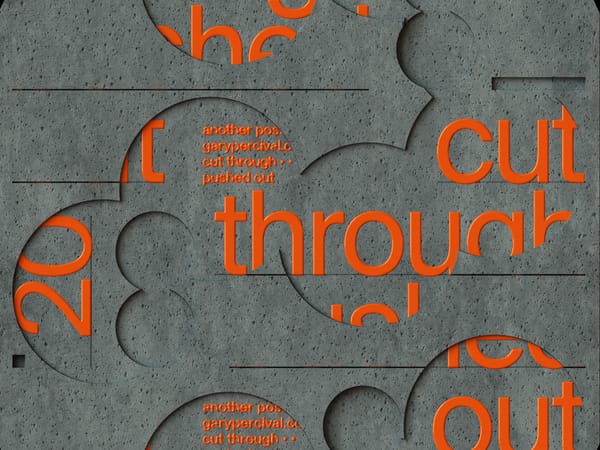Clear the Air Early: How Timely Feedback Trumps Delayed Criticism
Timely feedback is the key to unlocking your creative potential and delivering exceptional work.

Whether you're a freelancer or a graphic designer, constructive input helps you improve your work and meet client expectations.
However, the timing of feedback is just as important as its content. Delayed criticism can lead to a host of challenges, from missed opportunities for improvement to strained relationships with clients.
In this post, we'll explore the benefits of timely feedback and why it trumps delayed criticism in the creative process.
"Timely feedback is the key to unlocking your creative potential and delivering exceptional work."
The Benefits of Timely Feedback
- Faster project turnaround: One of the most significant advantages of timely feedback is its ability to streamline the creative process. Early identification of issues enables designers to promptly make adjustments and corrections, thereby avoiding extensive rework later on.
This not only saves time but also ensures that projects stay on track and meet deadlines. By addressing concerns as they arise, creatives can maintain momentum and deliver high-quality work more efficiently.
- Improved client relationships: Timely feedback demonstrates responsiveness and attention to client needs. When designers actively seek input and address concerns promptly, they show a genuine commitment to understanding and meeting their client's expectations.
This level of engagement fosters trust and strengthens the working relationship. Clients appreciate feeling heard and valued, and timely feedback creates an environment of open communication and collaboration.
- Enhanced learning and growth: Receiving feedback in real-time provides invaluable opportunities for skill development and personal growth. When creatives are able to immediately apply insights and suggestions to their work, they can see the impact of their improvements firsthand.
This reinforces positive changes and encourages a receptive and adaptable approach to feedback. Timely feedback allows designers to experiment, iterate, and refine their techniques, ultimately leading to a more dynamic and versatile skill set.
The Drawbacks of Delayed Criticism
- Wasted time and resources: Delaying feedback can lead to significant setbacks in the creative process. Withholding criticism until late in the project may lead designers to invest substantial time and effort in a misguided direction.
This can result in the need for extensive rework, undoing hours of labour, and potentially pushing the project past its deadline. If we had provided feedback earlier, we could have better allocated the resources spent on pursuing an incorrect path.
"Delayed criticism is like a roadblock on the path to success, hindering progress and straining relationships."
- Strained client relationships: Delayed criticism can strain the relationship between designers and clients. Withholding feedback until the end of a project may frustrate clients due to unmet expectations or a lack of alignment with their vision.
This can erode trust and credibility, making it harder to maintain a positive working dynamic. Clients may question the designer's ability to understand and deliver on their needs, leading to a breakdown in communication and the potential loss of future opportunities.
- Hindered personal and professional development: Without timely feedback, creatives miss out on valuable opportunities for growth and improvement. Delayed criticism allows bad habits or ineffective practices to become entrenched, making them harder to correct later on.
Designers may continue to apply misguided techniques or overlook areas for development, hindering their overall progression. Timely feedback, on the other hand, enables creatives to course-correct quickly, refine their skills, and stay ahead of industry trends.
Strategies for Encouraging Timely Feedback
- Set clear expectations from the start: To foster an environment of timely feedback, it's essential to establish open lines of communication from the outset. During the initial project discussions, designers should agree with clients on feedback timelines and preferred methods of communication.
Both parties can prioritise regular check-ins and ensure the provision of feedback at key milestones throughout the project by setting these expectations upfront.
- Regularly seek input and opinions: Designers shouldn't wait for clients to initiate feedback; instead, they should proactively seek input and opinions at various stages of the creative process. Scheduling regular check-ins and progress reviews allows for a continuous exchange of ideas and helps identify potential issues early on.
By actively soliciting feedback, designers demonstrate their commitment to collaboration and their desire to align with the client's vision.
- Create a feedback-friendly environment: Encouraging timely feedback requires fostering a culture of openness and transparency. Designers should create a safe space where clients feel comfortable sharing their thoughts and concerns without fear of judgement or defensiveness.
By promoting a dialogue-based approach and welcoming constructive criticism, creatives can build trust and facilitate more effective communication. This feedback-friendly environment fosters productive conversations and guarantees prompt delivery and reception of input.
- Leverage technology for seamless feedback exchange: In today's digital age, there are numerous tools and platforms that can streamline the feedback process. Utilising project management software, collaborative design tools, or even simply sharing work through cloud-based storage can make it easier for clients to provide timely input.
These technologies allow for real-time comments, annotations, and version control, ensuring that feedback is captured and addressed efficiently. By leveraging these tools, designers can create a more seamless and integrated feedback loop, promoting timely communication and minimising delays.
Handling Difficult Feedback Conversations
- Approach feedback with a positive attitude: Receiving criticism, even when it's timely, can be challenging. However, designers must approach feedback conversations with a positive and open attitude, viewing them as opportunities for improvement rather than personal attacks.
Maintaining professionalism and composure, even in the face of difficult feedback, is essential. By keeping an open mind and focusing on the insights provided, creatives can extract valuable lessons and use them to elevate their work.
- Ask clarifying questions and seek specific examples: When feedback is unclear or ambiguous, designers should ask clarifying questions to ensure a thorough understanding. Requesting specific examples can help contextualise the feedback and make it more actionable.
By engaging in a dialogue and seeking further information, designers can gain a deeper comprehension of the client's perspective and identify concrete steps for improvement.
"Embrace feedback with an open mind and a willingness to learn, and you'll unlock the door to continuous growth and success."
- Follow up and keep the lines of communication open: After receiving feedback, designers should provide updates on their progress and the changes they've implemented. This shows the client that you are responsive and have taken their input seriously.
Keeping the lines of communication open throughout the project is crucial. Designers should continue to solicit feedback at regular intervals, ensuring that the work remains aligned with the client's expectations and allowing for any necessary course corrections.
Conclusion
In the world of creative industries, timely feedback is a powerful tool for driving success and fostering growth. By prioritising open communication and actively seeking input throughout the creative process, designers can reap the benefits of faster project turnaround, improved client relationships, and enhanced learning opportunities.
Delayed criticism, on the other hand, can lead to wasted resources, strained partnerships, and hindered professional development.
As freelancers, graphic designers, and creatives, embracing a culture of timely feedback is essential for navigating the challenges and opportunities of the industry. By implementing strategies for encouraging open communication, leveraging technology for seamless feedback exchange, and handling difficult conversations with grace and professionalism, designers can cultivate a collaborative environment that fuels innovation and excellence.
So, let's clear the air early and make timely feedback a cornerstone of our creative pursuits. By doing so, we can unlock our full potential, strengthen our client relationships, and deliver work that truly shines.



